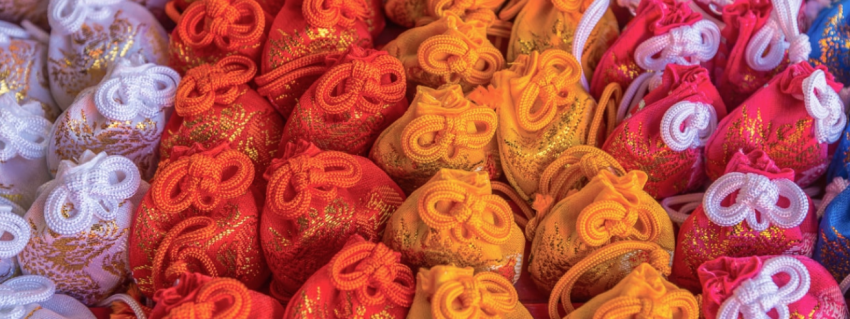What is an omamori and what can it do for you?
"Omamori" are essentially prayers or sacred inscriptions inside small, colorful brocade pouches sold at Shinto shrines and Buddhist temples all across Japan. In Japanese “omamori” (お守り, 御守) means “to protect” or “protection.”
Introduced to Japan via the Buddhist practice of selling amulets, omamori can be found at any temple or shrine with a small shop. Omamori can be purchased by anyone regardless of their religious beliefs, and, in modern Japan, are considered a perfect souvenir from famous shrines and temples. They typically cost between ¥300 to ¥1,000 per amulet, though some come in sets of two, depending on their purpose.
The different types of omamori
Originally made from paper or wood, nowadays you can find omamori of all types—including stickers, car window decals, keychains, phone straps, credit cards, small metal charms, and ones featuring Hello Kitty, Mickey Mouse, and popular anime characters. Some shrines and temples have partnerships with sports teams or famous Japanese brands, too.

The types and designs of omamori vary from place to place, and many of the higher-in-demand ones can even be found being resold online for higher prices. This practice, however, is strongly frowned upon by shrine and temple priests, and according to some, can bring the opposite of good luck to both reseller and purchaser.
Some shrines and temples also have highly exclusive charms that may only be available at certain times of day, or during certain festivals each year.
Every shrine and temple has its own deities and purposes and as such, each has its own focus. Generally speaking, these focuses will determine what the “best” omamori from that shrine/temple is, but according to a Shinto priest I’ve spoken with: “the ideal omamori will call out to you—you will know which one you need when you see it.”
That being said, the most common types of omamori are as follows:
- Katsumori (勝守) – success; to win/succeed at something you have hoped for
- Shiawase (幸せ) – happiness; to help you achieve happiness in life
- Kaiun (開運) – good fortune; the general “good luck” sort of talisman
- Yakuyoke (厄除け) – warding off evil/ill fortune; prevents bad luck from hindering your goals
- Kenko (健康) – general good health
Click here to read more.
- External Link
- https://savvytokyo.com/
 Take our user survey and make your voice heard.
Take our user survey and make your voice heard.















No Comment
Login to comment